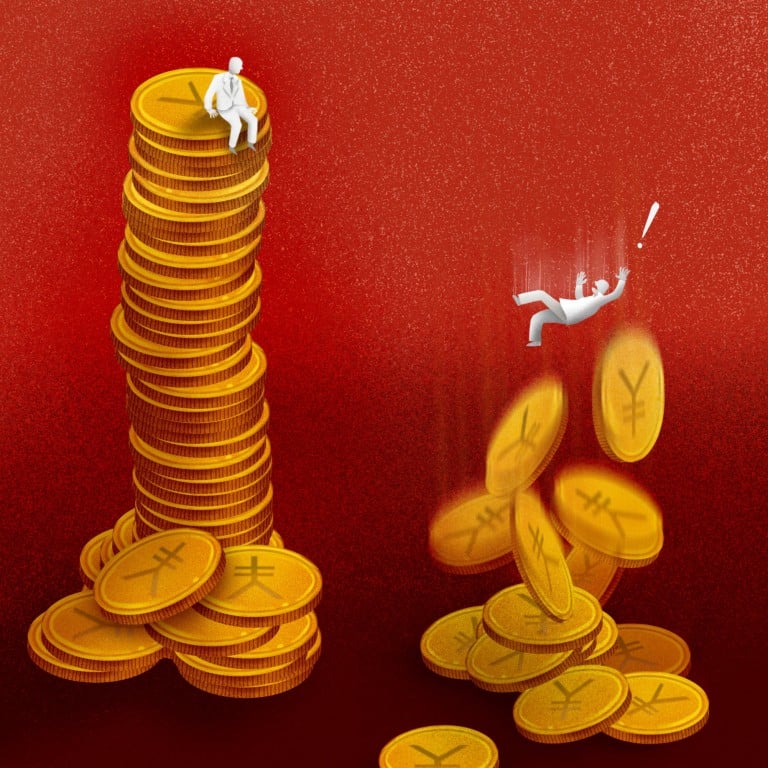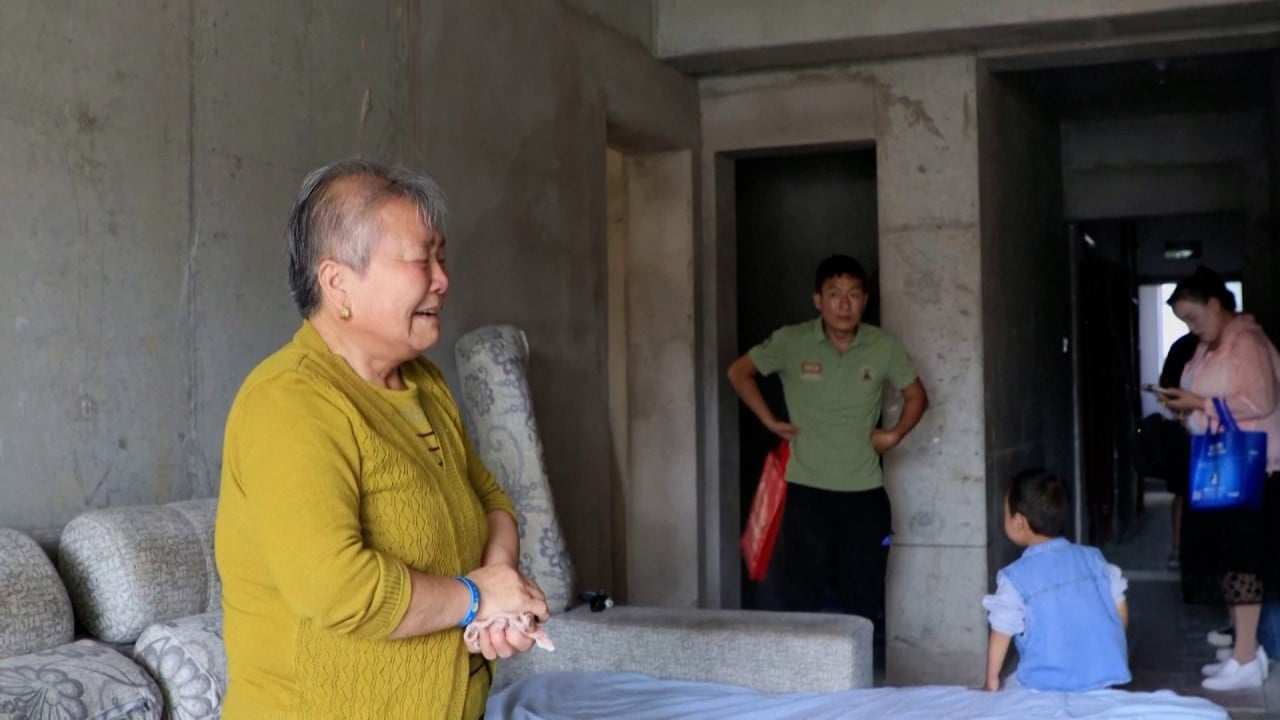
China’s vulnerable middle class must ‘work harder’ to maintain status quo, Beijing seeks urgent fix for indispensable cohort
- China’s crucial middle class, an oft-cited group of 400 million, may shrink in the absence of a strong economic recovery
- Beijing sees the group as crucial for economic growth and social stability, and to counter external challenges, amid the bumpy post-Covid recovery
For China’s middle class, things have never looked harder as they reflected on 2023 and peered ahead to the second year of what should be a post-pandemic economic recovery in 2024.
No signs have yet emerged to upend their frustration as the property market meltdown and free-falling stock market have continued to wipe out their wealth.
The troubles are endangering the world’s largest middle class, as economists have warned that the group that numbers an oft-cited 400 million may shrink in the absence of a strong economic recovery.
Some are faced with unstable jobs, and under threat of dropping out of the middle-income group
While there is no definition of the middle class in China, the commonly used phrase of middle-income group is defined by the National Bureau of Statistics as a three-person household earning between 100,000 yuan (US$14,000) and 500,000 yuan a year.
In a rare warning, an editorial commentary by the state-run Economic Daily last month noted the risk of a declining middle-income group, and called for “necessity and urgency” to foster its growth.
“Middle-income groups matter greatly to economic growth, social stability and countering external challenges,” said the commentary published on December 27.
“But a bulk of the groups are lower-middle-income ones. Some are faced with unstable jobs, and under threat of dropping out of the middle-income group.”
China has said it has about 400 million middle-income earners, or 140 million families, constituting around 30 per cent of its 1.4 billion population.
A large proportion of the group are seen to be still close to the lower limit, which therefore warrants policy support to raise their incomes and enhance their sense of gain, said Chinese central bank policy adviser Wang Yiming.
“A majority of the group just passed the threshold of the middle income. This group is among the most vulnerable ones to economic shock, such as the pandemic, which may affect their income and jobs,” the former vice-director of the Development Research Centre of the State Council said in an interview with the state-backed CCTV earlier this month.
It is hard for me to shift to a new sector as a middle-aged man
Li, a sales manager who turned 40 last year, was laid off two weeks ago as his employer, a content management website, downsized its marketing department.
“I would suffer losses from whatever I invest in. It is not easy to find a new job at the current payroll level,” said Li, who only provided his surname due to the sensitivity of the issue.
“It is hard for me to shift to a new sector as a middle-aged man,” added Li, who said his income had mainly been used to repay a mortgage and both a car and personal loan for his four-person family.
‘No one dares to spend’: why China’s middle class is tightening its belt
The expected average yield for one-year online wealth management products also stood at 2.79 per cent in the second week of 2024, down from 4.41 per cent almost two years ago, according to Chinese data provider Wind.
And property sales in China by floor area have fallen, dropping by 8.5 per cent in 2023 to 112 million square metres (1.2 billion sq ft), hitting the lowest level in a decade.
Winnie Liu, a manager at a foreign-invested company in Shenzhen, bought a one-bedroom flat in 2015 for an investment, seen as the most favoured wealth accumulation method for Chinese households.
I certainly hope there won’t be another big drop this year
The price peaked at 6.3 million yuan (US$882,000) in 2021, but it has fallen to less than 4 million yuan.
“My assets have shrunk a lot over the last two years, either properties or financial investments,” Liu said.
“I certainly hope there won’t be another big drop this year.”
But despite also losing about 40 per cent of her investment in the domestic stock market last year, Liu still considers herself lucky compared to those who invested in real estate after 2018.
“Many of them have started turning into negative asset holders,” Liu added.
A survey of the middle-class group aged between 31 and 40 by finance and economic writer Wu Xiaobo indicated that wealth growth slowed last year, which led to an increased reluctance in spending.
Nearly half of the people polled had a pre-tax personal annual income of between 200,000 yuan (US$28,000) and 500,000 yuan, and household assets of between 3 million yuan and 10 million yuan.
Middle-class Chinese shun luxury spending amid hazy outlook
According to Wu’s report, 11.4 per cent of middle-class families reported their wealth had shrunk by more than 30 per cent last year, with 28.9 per cent mentioning a decrease in wealth ranging from between 10 and 30 per cent.
Only 24.8 per cent said their wealth had increased in 2023, compared to 29 per cent a year ago and 55 per cent in 2021, according to the white paper.
He had been unable to break even for the last six years, having opened the kindergarten in his hometown in the central province of Henan after being laid off by a tech company in Shenzhen.
Better income is no longer a given. We need to work harder to maintain a middle-class life
“Previously we had charged 15,000 yuan a year for each kid, but later we had to cut it to 10,000 yuan as many parents’ incomes dropped. Even so, enrolment was still nowhere near where it once was,” said Huang, who owes hundreds of thousands of yuan in bank loans, having also borrowed from friends and relatives.
Huang returned to Shenzhen last summer and took an offer from a Chinese company to work overseas at a lower salary.
“Better income is no longer a given. We need to work harder to maintain a middle-class life,” he said.
The US-based Pew Research Centre said in 2021 that due to the coronavirus, China’s middle-income tier likely decreased by 10 million in 2020, although the decline only represented only a small share of the 504 million who were in the middle class before the pandemic.
Pew estimated that 247 million people moved up to China’s middle-income tier in the 2010s, when the upper-middle income population had nearly quadrupled from 60 million to 234 million.
Research by the Centre for Strategic and International Studies (CSIS) in 2021 said the middle-income tier in China had swollen to roughly 707 million in 2018, or 50.8 per cent of the population.
Most of the growth has accrued within the lower-middle income band, with 68 per cent of the middle class falling into the echelon in 2018, CSIS said, compared to 18 per cent in Sweden.
Household wealth and income have continued to improve, but recovery has still remained subdued, according to the third-quarter Chinese Household Financial Survey by the China Household Finance Survey and Research Center at the Southwestern University of Finance and Economics.
The survey said households’ total liabilities continued to increase in the third quarter of last year, while the rate of returns from wealth management products fell to minus 0.3 per cent, worse than minus 0.1 per cent in the previous three months.
But a subindex on family wealth and income expectation stood at 102.1, the second-lowest reading since the second quarter of 2020.
A subindex measuring employment outlook also remained below 100 – representing a contraction – for the third consecutive quarter despite a slight improvement.
Consumption downgrading is the way to go
Pianos are the latest to suffer from a lack of spending within the middle class. Sales had soared, especially in Beijing and Shanghai, but a number of dealers and shops were forced to close last year
And according to a report by Chinese digital media outlet Jiemian News last week, sales have tumbled since April last year, falling to around 15 per cent of the peak in 2019.
“Consumption downgrading is the way to go. I used to shop for affordable luxury brands a lot. Now I only choose national brands for myself and my family,” added Liu in Shenzhen.



